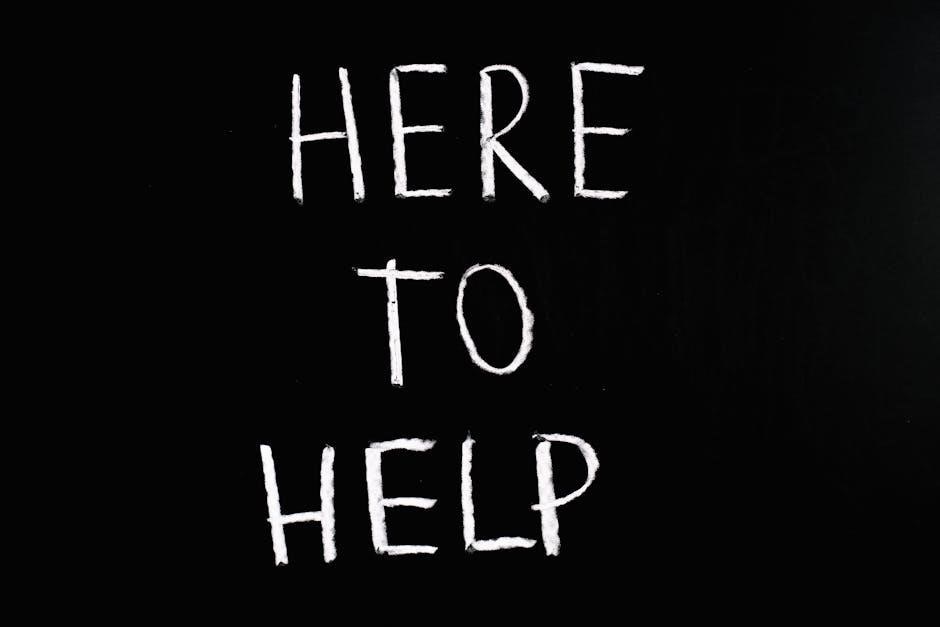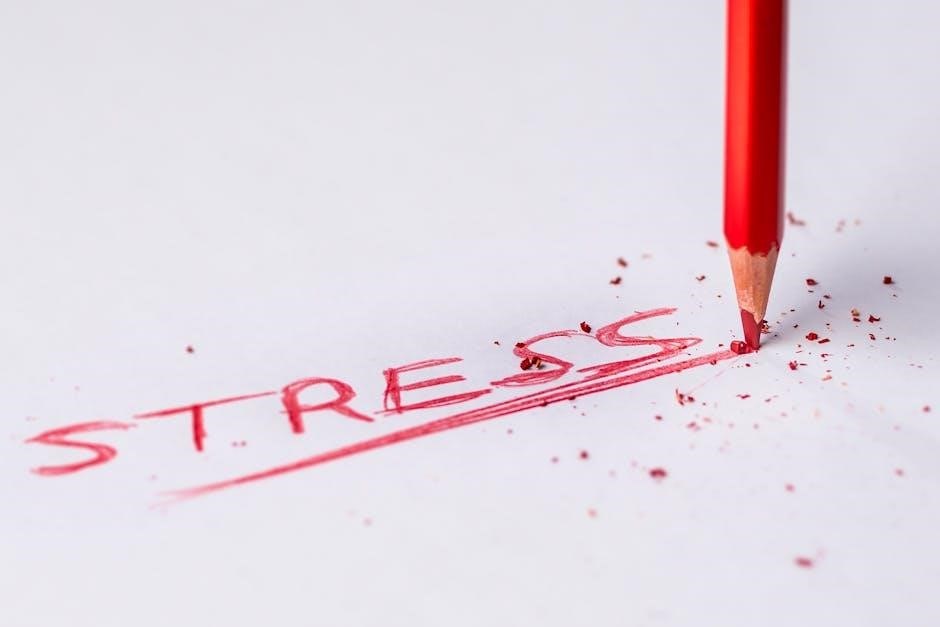Compound words are formed by combining two or more words, creating new meanings. They can be written as separate words, joined, or hyphenated. Understanding compound words enhances vocabulary, spelling, and language skills.
1.1 Definition and Examples
A compound word is formed when two or more words are combined to create a new word with a unique meaning. For example, “bookshelf” combines “book” and “shelf,” while “toothbrush” combines “tooth” and “brush.” Compound words can be written in three forms: closed (one word, e.g., “firefly”), hyphenated (e.g., “state-of-the-art”), or open (separate words, e.g., “post office”).
- Examples of closed compound words: “firefly,” “sunflower,” “birthday.”
- Examples of hyphenated compound words: “mother-in-law,” “well-known,” “self-made.”
- Examples of open compound words: “high school,” “ice cream,” “real estate.”
Understanding compound words is essential for expanding vocabulary and improving spelling and reading skills in English.
1.2 Importance in English Learning
Mastering compound words is crucial for English learners as it enhances vocabulary, improves spelling accuracy, and boosts reading comprehension. Compound words often carry unique meanings that differ from their individual components, making them essential for clear communication. Understanding these words helps learners grasp word structure, aiding in decoding unfamiliar terms. Additionally, compound words are common in everyday language, so recognizing them improves fluency and expression. Worksheets focused on compound words provide structured practice, reinforcing these skills effectively. By prioritizing compound word learning, students can expand their linguistic toolkit and gain confidence in using English more precisely and effectively.

Benefits of Using Compound Word Worksheets
Compound word worksheets offer structured practice, enhancing recognition, retention, and application. They make learning interactive and fun, providing clear examples and exercises that build foundational language skills effectively.
2.1 Practical Learning Tools
Compound word worksheets serve as practical learning tools, offering interactive and engaging methods for mastering compound words. These resources are designed to help students identify, create, and understand compound words through various exercises. Activities such as matching word parts, filling in blanks, and breaking down compound words into their components make learning hands-on and effective. Worksheets cater to different learning styles, ensuring that students can grasp the concept regardless of their preferences. By providing structured practice, they improve spelling, vocabulary, and the ability to recognize word patterns. Additionally, these tools encourage critical thinking and problem-solving skills, making them invaluable for language development. Regular use of compound word worksheets can enhance overall language proficiency and confidence in using English effectively.
2.2 Enhancing Spelling and Vocabulary
Compound word worksheets are excellent tools for improving spelling and vocabulary skills. By breaking down compound words into their component parts, learners can better understand how words are structured and formed. This process enhances their ability to spell complex words accurately. Additionally, compound words often carry unique meanings that aren’t immediately obvious from their individual parts, which encourages learners to expand their vocabulary. Interactive exercises, such as matching games or fill-in-the-blank activities, make learning engaging and effective. These worksheets also help students recognize patterns in word formation, making it easier to decode unfamiliar compound words in the future. Regular practice with compound word worksheets can significantly boost both spelling proficiency and vocabulary retention.
- Improves spelling accuracy through repetition and pattern recognition.
- Expands vocabulary by introducing new compound words and their meanings.
- Enhances understanding of word structure and formation.
2.3 Understanding Word Structure
Compound word worksheets help learners analyze how words combine to form new meanings. By breaking down compound words into their component parts, students gain insight into word formation. For example, “sunflower” can be split into “sun” and “flower,” showing how smaller words create a larger concept. These exercises also clarify whether compound words are written separately, joined, or hyphenated, such as “toothbrush” (joined) or “state-of-the-art” (hyphenated). Understanding word structure improves spelling accuracy and vocabulary expansion. Activities like matching and fill-in-the-blank exercises encourage learners to identify and manipulate word components, fostering a deeper grasp of English morphology. This skill is essential for decoding unfamiliar words and enhancing overall language proficiency.

Creating Effective Compound Word Worksheets
Effective compound word worksheets engage learners with hands-on activities. Include matching games, fill-in-the-blanks, and crossword puzzles to practice forming and identifying compound words. Use clear instructions and visual aids for better understanding.
3.1 Matching and Fill-in-the-Blank Activities

Matching and fill-in-the-blank activities are excellent tools for reinforcing compound word recognition. These exercises typically involve pairing word components or filling in missing parts to form complete compound words. For example, students might match “sun” with “flower” to create “sunflower” or fill in the blank in “book___shelf” to make “bookshelf.” These tasks enhance spelling accuracy and vocabulary retention. They also encourage critical thinking as learners connect word parts to their meanings. Such activities are particularly effective for visual and kinesthetic learners, providing hands-on practice. By incorporating clues or illustrations, these worksheets can further engage students, making the learning process both enjoyable and effective. Regular use of these exercises helps build confidence and fluency in using compound words correctly.
3.2 Crossword Puzzles and Word Searches
Crossword puzzles and word searches are engaging ways to practice compound words. These activities challenge learners to identify and spell compound words in a fun, interactive manner. Crosswords require understanding word structure, as clues often hint at the meaning of each part. Word searches, on the other hand, help improve recognition by locating compound words hidden in grids. Both exercises enhance problem-solving skills and reinforce vocabulary retention. They also encourage learners to think critically about how words combine. By incorporating these games into compound word worksheets, educators can make learning more enjoyable and effective. Such activities not only build confidence but also provide a sense of accomplishment as students master new words. They are ideal for students of all ages and skill levels, making them versatile tools for language learning. Crossword puzzles and word searches are valuable additions to any compound word practice routine.
3.3 Word Breakdown Exercises
Word breakdown exercises are an effective way to help learners understand and identify compound words. These exercises typically involve breaking down compound words into their individual components. For example, “toothbrush” can be separated into “tooth” and “brush.” Activities may include matching games, where students pair word parts to form complete compound words. Another approach is filling in missing parts, such as completing “sun____” with “flower.” These exercises improve recognition, spelling, and comprehension. They also highlight how compound words often carry unique meanings that differ from their individual parts. By practicing word breakdowns, learners gain a deeper understanding of word structure and vocabulary expansion.

Finding Compound Word Worksheets
Educational websites, teacher platforms, and language learning apps offer a wide variety of compound word worksheets. These resources provide convenient access to practice materials for all skill levels.
4.1 Educational Websites and Resources
Educational websites offer a wide range of compound word worksheets in PDF format, making them easily accessible for teachers and students. Websites like Education.com, Teachers Pay Teachers, and BusyTeacher provide high-quality, printable resources designed for various grade levels. These platforms often include interactive activities, such as matching games, fill-in-the-blank exercises, and word searches, to engage learners. Additionally, Macmillan Education and Scholastic offer comprehensive compound word exercises tailored to improve spelling, vocabulary, and reading skills. Many of these resources are free or require a minimal subscription, making them a practical choice for classroom or homeschooling use. They cater to different learning styles, ensuring that students can grasp compound word concepts effectively.
4.2 Teacher Resource Platforms
Teacher resource platforms are excellent sources for compound word worksheets, offering a variety of educational materials. Websites like Teachers Pay Teachers and Education.com provide downloadable worksheets tailored for different grade levels. These platforms often include interactive activities, such as matching games and fill-in-the-blank exercises, to engage students. Many resources are created by experienced educators, ensuring quality and relevance. Additionally, these platforms allow teachers to customize worksheets to meet specific classroom needs. They also offer bundles and themed sets, making lesson planning easier. By leveraging these resources, educators can effectively incorporate compound word practice into their curriculum, helping students build vocabulary and spelling skills in a structured and fun manner.
4.3 Language Learning Apps
Language learning apps are excellent resources for accessing compound word worksheets and interactive exercises. Many apps, such as Duolingo, Babbel, and Quizlet, offer tailored lessons and quizzes to help learners master compound words. These platforms often include flashcards, matching games, and spelling drills that make learning engaging and fun. Additionally, apps like Memrise provide user-generated content, allowing learners to explore compound words in a dynamic and personalized way. With features like progress tracking and audio pronunciation guides, language learning apps are ideal for both beginners and advanced learners. They also cater to different learning styles, ensuring that compound word practice is both effective and enjoyable.

Tips for Using Worksheets Effectively
Set clear goals, encourage self-testing, and incorporate visual aids. Utilize technology for interactive exercises and provide constructive feedback to enhance learning outcomes effectively.
5.1 Setting Clear Learning Goals
Setting clear learning goals is essential for effective compound word practice. Start by identifying specific objectives, such as mastering a set number of compound words or improving spelling accuracy. Break goals into manageable parts, like focusing on a particular type of compound word (e.g., closed or hyphenated) each week. This approach ensures steady progress and avoids overwhelming learners. Use compound word worksheets as a tool to track development, allowing students to see their improvement over time. Clear goals also help maintain motivation, as learners can celebrate achieving milestones. Incorporate visual aids and interactive exercises to make the process engaging and measurable. By aligning activities with defined objectives, educators can ensure targeted and productive learning experiences.
5.2 Encouraging Self-Testing
Self-testing is a powerful tool for learners to assess their understanding of compound words. By using compound word worksheets, students can independently review and practice identifying and spelling compound words. This method fosters self-directed learning and reinforces retention. Encourage learners to set aside dedicated time for self-testing, using worksheets to quiz themselves or track progress over time. Tools like flashcards or apps can also support this process. Immediate feedback helps identify areas needing improvement. Celebrate small achievements to build confidence and motivation. Self-testing not only enhances problem-solving skills but also promotes a growth mindset, empowering learners to take ownership of their education. Regular practice with compound word worksheets ensures steady improvement in vocabulary and spelling abilities.
5.3 Incorporating Visual Aids
Incorporating visual aids into compound word worksheets can significantly enhance learning. Images, diagrams, and charts help students connect words with meanings, making complex concepts more relatable. For example, pairing a picture of a “sunflower” with the compound word can reinforce its composition. Visual aids also cater to different learning styles, engaging visual learners effectively. They can highlight word structures, such as separating “sun” and “flower” in “sunflower,” aiding in better retention. Additionally, visual aids can make worksheets more interactive, encouraging students to explore and identify compound words independently. By integrating visuals, educators create a more dynamic and engaging learning environment, fostering a deeper understanding of compound words and their formation.
5.4 Utilizing Technology
Technology offers innovative ways to enhance compound word learning. Educational apps like Kahoot! and Quizlet provide interactive compound word games and flashcards, making practice engaging and fun. Online platforms such as Teachers Pay Teachers and Education.com offer downloadable PDF worksheets, ensuring accessibility and convenience. Additionally, digital tools like Google Classroom allow teachers to assign and track compound word exercises seamlessly. Interactive whiteboards in classrooms can also display compound word activities, fostering group participation. PDF resources often include customizable worksheets, catering to different learning levels. By integrating technology, learners can practice compound words dynamically, reinforcing their understanding and retention through visual and auditory aids. This approach makes learning compound words more efficient and enjoyable for students of all ages.
5.5 Providing Constructive Feedback
Constructive feedback is essential for helping learners improve their understanding and use of compound words. When reviewing worksheets, highlight both achievements and areas for improvement. Celebrate correct answers to boost confidence, while gently pointing out mistakes. For incorrect responses, explain why the answer is wrong and provide the correct compound word. Encourage learners to reflect on their errors and try similar problems again. Specific, clear feedback helps students understand their progress and focus on weak areas. Additionally, use positive language to motivate and guide them toward better comprehension and retention of compound words. This approach fosters a supportive learning environment and enhances overall language development.

Common Mistakes to Avoid
Common mistakes include omitting spaces or hyphens, confusing compound words with phrases, and misspelling component words. Practicing with worksheets helps learners avoid these errors effectively.
6.1 Forgetting Spaces or Hyphens

One common mistake when dealing with compound words is forgetting to include spaces or hyphens. Compound words can appear in three forms: closed (e.g., bookshelf), open (e.g., post office), or hyphenated (e.g., state-of-the-art). Forgetting these spaces or hyphens can completely change the meaning of a word or make it unreadable. For instance, together (closed) is correct, while to gether (open) or to-get-her (hyphenated) are incorrect. Worksheets can help learners identify and practice these differences, ensuring proper usage in sentences. This skill is essential for clear communication and accurate spelling.
6.2 Confusing Compound Words with Phrases
One common mistake learners make is confusing compound words with phrases. Unlike phrases, compound words function as a single unit, carrying a unique meaning that differs from the individual words; For instance, “toothbrush” is a compound word, while “black board” is a phrase. This confusion often leads to errors in spelling and comprehension. To avoid this, it’s essential to identify whether the words act together as one concept or remain separate. Compound words can be closed (written as one word), open (written separately), or hyphenated, but they always form a new meaning; Practicing with exercises that highlight these differences can help learners master the distinction and improve their language skills effectively.
6.3 Misspelling Component Words
Misspelling component words is a common error when dealing with compound words. It often stems from phonetic similarities or unfamiliarity with correct spellings. Compound word worksheets can help by focusing on breaking down words into components. Activities like matching games, fill-in-the-blanks, and word searches can improve spelling accuracy. Visual aids, such as flashcards, can reinforce correct spellings, while interactive exercises like crossword puzzles make learning engaging. Immediate feedback mechanisms in these tools help learners identify and correct mistakes, enhancing their understanding and retention of compound words.

Compound Word Games and Activities
Engaging compound word games like Bingo and memory matching enhance learning. Interactive activities such as word building exercises and charades make practicing compound words fun and effective for all learners daily.
7.1 Word Building Exercises

Word building exercises are interactive activities that help learners construct compound words by combining individual words or parts of words. These exercises often involve matching root words with prefixes or suffixes, or pairing words to create meaningful compounds. For example, combining “sun” and “flower” to form “sunflower.” Many compound word worksheets include word banks or picture prompts to guide learners. These exercises enhance creativity and reinforce the understanding of how smaller words contribute to larger ones. They also make learning engaging and fun, encouraging learners to experiment with different combinations. Regular practice with word building exercises can significantly improve vocabulary retention and the ability to decode complex words. Incorporating visual aids, like images, further aids comprehension, making these exercises a valuable tool for language learners of all ages.
7.2 Compound Word Charades
Compound Word Charades is a fun, interactive activity that engages students in active learning. Students take turns acting out compound words without speaking, while their peers guess the correct word. For example, acting out “toothbrush” by miming brushing teeth. This game enhances word recognition, teamwork, and creativity. It also reinforces understanding of compound word structures. Variations include using gestures for word parts or incorporating props. Teachers can create lists of compound words aligned with worksheets for practice. This activity makes learning dynamic and memorable, fostering collaboration and excitement in the classroom while reinforcing vocabulary skills.
7.3 Bingo and Memory Games
Bingo and memory games are interactive activities that make learning compound words fun and engaging. These games are designed to improve recognition, retention, and spelling skills. In bingo, players match compound words to their definitions or pictures on a card, while memory games involve pairing compound words with their component parts or meanings. For example, students might flip cards to find matching pairs like “book” and “shelf” to form “bookshelf.” These activities encourage active participation and teamwork, creating a lively learning environment. They also help students develop problem-solving skills and build confidence in using compound words effectively. Incorporating such games into practice routines can make learning compound words an enjoyable and memorable experience for all learners.
- Enhance vocabulary retention through interactive play.
- Develop problem-solving and memory skills.
- Create a fun, collaborative learning atmosphere.
Compound words are essential for vocabulary growth. Worksheets help learners master their formation and usage, fostering better spelling and language understanding. Regular practice enhances overall English proficiency effectively.
8.1 Summary of Key Points
Compound words are essential for expanding vocabulary and improving spelling skills. Worksheets provide structured practice, helping learners recognize and understand compound word formation. They enhance readability and comprehension by breaking down complex words into familiar components. Regular use of compound word worksheets fosters confidence in language use, making them a valuable tool for learners of all levels. Consistent practice with these exercises ensures long-term retention and mastery of compound words.
8.2 Encouragement for Further Practice
Consistent practice is key to mastering compound words. Encourage learners to explore various resources like worksheets, apps, and games to reinforce their understanding. Setting achievable goals, such as learning a few new compound words daily, can build confidence and fluency. Celebrate progress, no matter how small, to maintain motivation; Remind learners that compound words are a fun and creative aspect of language, offering insights into word meanings and cultural context. By embracing regular practice, learners can develop a stronger grasp of English vocabulary and improve their overall communication skills. Encourage them to stay curious and enjoy the journey of discovering new words!
8.3 Additional Resources for Exploration
For further learning, explore educational websites like Teachers Pay Teachers and Education.com, which offer downloadable compound word worksheets. Platforms like Khan Academy and Duolingo provide interactive exercises. Additionally, language learning apps such as Babbel and Quizlet include compound word drills. Many teacher resource platforms also share printable activities and digital tools. Language learners can benefit from these resources to deepen their understanding and practice compound words effectively. Utilize search filters like “compound word worksheets PDF” to find specific materials tailored to your needs. These resources cater to various skill levels, ensuring comprehensive practice and mastery of compound words.
